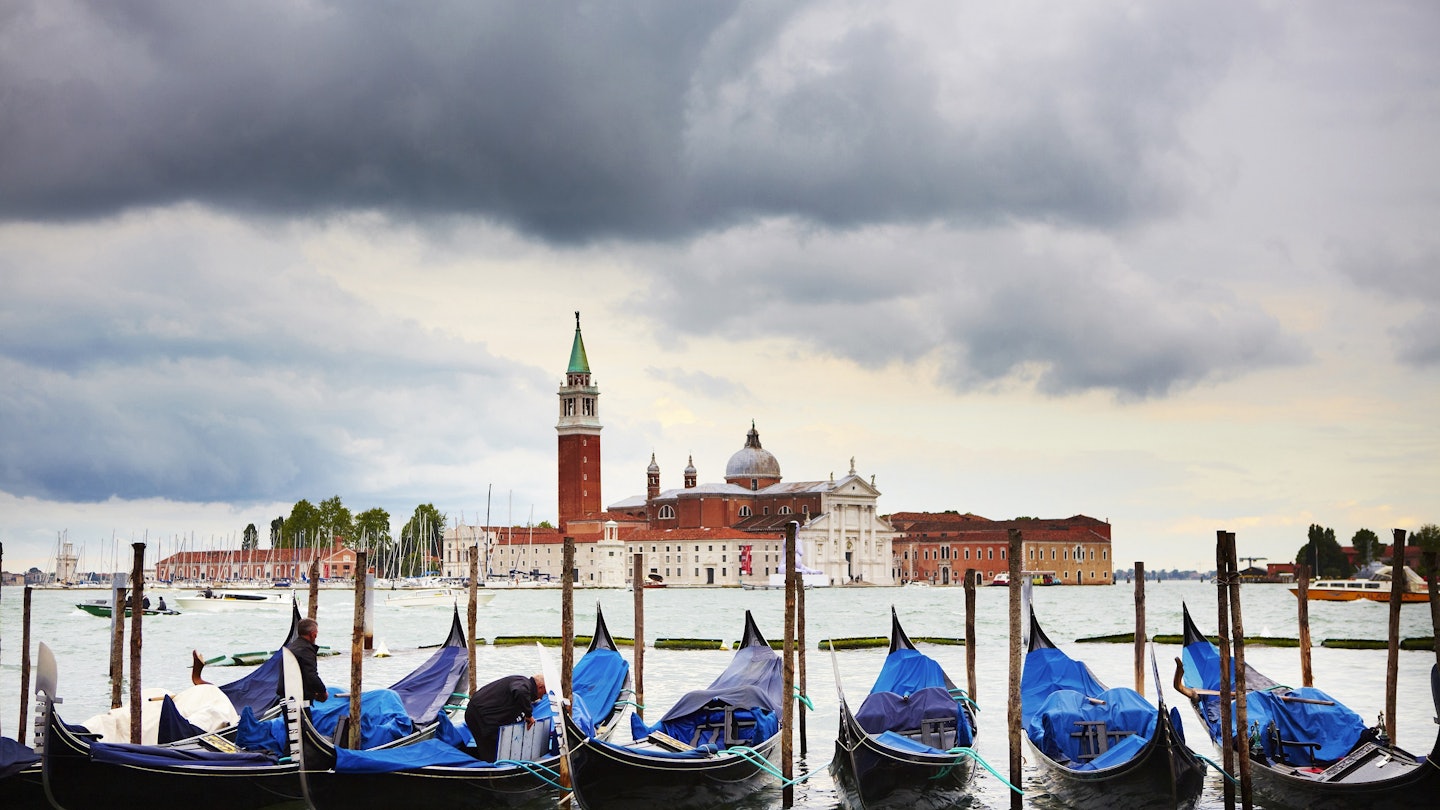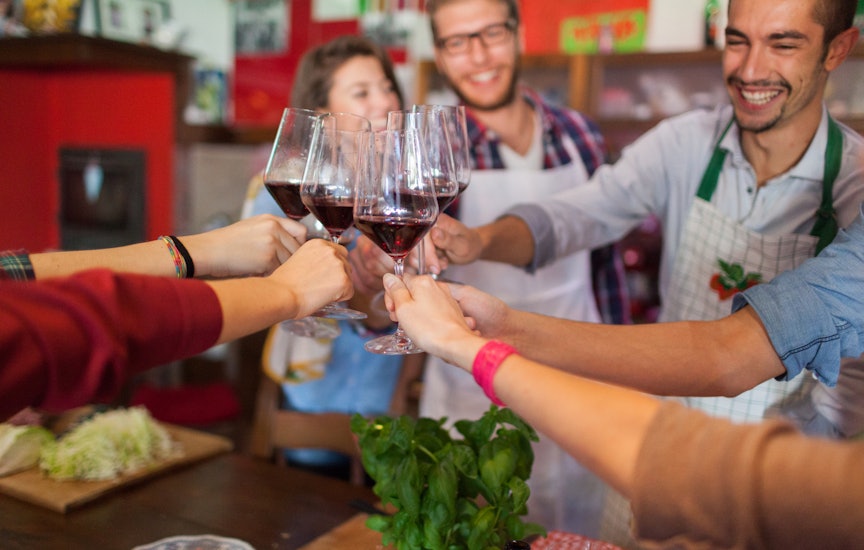
Now the floods are over, here's how to make a positive impact on your trip to Venice

Dec 6, 2019 • 3 min read

Head to Venice's Chiesa San Giorgio Maggiore instead of St Mark's bell tower for high-up views © Matt Munro / Lonely Planet
With recent floods in Venice the worst in over 50 years, Lonely Planet looks at how travellers can visit in a sustainable way and make a positive impact.
Once the capital of a powerful maritime republic, Venice now feels like a city living on borrowed time. November’s devastating floods – the worst in over 50 years – have demonstrated the fragile nature of Italy’s lagoon showpiece. Climate change – widely believed to be behind the severe tidal floods – is only part of the problem. In recent years, mass tourism has placed an unprecedented strain on the city, causing overcrowding, environmental damage and, according to many Venetians, a loss of local character. Yet, there are some easy ways to visit Venice sustainably and respectfully, enjoying its cultural riches without loving the city to death.

Plan thoughtfully
When planning your trip, consider avoiding peak seasons, especially summer. October, for instance, can still be mild, while January’s winter fogs create an evocative atmosphere befitting of Venice’s Gothic architecture. Best of all, accommodation is often cheaper and the crowds thinner. On the slumber front, staying in a hotel or B&B means supporting local jobs. If you’d rather crash in a Venetian home, consider booking through Fairbnb, an ethical home-sharing site that supports locals and community projects.

Seek less-trodden treasures
While there’s no denying the appeal of Piazza San Marco’s big-hitter sights, consider exploring lesser-known assets to ease overcrowding. You’ll find epic Tintoretto masterpieces in the Chiesa della Madonna dell’Orto, a string of Renaissance wonders in the Chiesa di San Francesco della Vigna, and precious historical fashions at Palazzo Mocenigo and Museo Fortuny. Venice’s Museo Ebraico runs fascinating tours of what is Europe’s oldest Jewish Ghetto, while the Byzantine mosaics inside Torcello’s Basilica di Santa Maria Assunta give the Basilica di San Marco a run for its money. For a prime-time view of Venice, swap St Mark’s Campanile for that of the Chiesa di San Giorgio Maggiore: the queues are shorter and the views arguably better.
Feast like a locavore
Thankfully, Venice’s most memorable food and wine experiences are also the most sustainable. Organic produce underscores bookstore-vegetarian cafe Sullaluna, which also pours organic prosecco made by the owners using traditional methods. At contemporary Zanze XVI, young-gun chef Marco Galtarossa turns out sophisticated fare using foraged ingredients and produce grown by sustainable, socially-conscious local farms. Along with Slow-Food stalwart Al Covo, it also offers a good-value lunch menu for budget-conscious gourmands. Natural wines, artisanal cheeses, quality salumi (charcuterie) and small batches of fresh ingredients make for memorable grazing at low-key Malvasia all'Adriatico Mar, while deli Enogastronomia Pantagruelica sells harder-to-find edibles and organic wines made by people the owners actually know and respect. At the Rialto Market, seek out produce labelled Nostrano (locally grown or caught). Lastly, leave those plastic bottles of water on the supermarket shelves; Venice’s tap water is perfectly drinkable.
Shop local
Soaring rents and the proliferation of poorer-quality imports are an ongoing threat to local artisans. Avoid garish shops selling cheap made-in-China trinkets and clothes. Seek out shops and workshops selling local, hand-crafted items designed to last. Top choices include bespoke business cards from Gianni Basso, paper jewellery and miniature Venetian dioramas from Paperoowl, and whimsical paintings, prints, postcards and contemporary ceramics from Ceramiche Chimera. For Venetian graphic tees, one-of-a-kind bags and natural beauty products, check out Process Collettivo, a not-for-profit cooperative offering training and paid employment to local prison inmates. Online, Venezia Autentica lists shops, restaurants and bars that contribute to a sustainable local economy.
You might also like:
8 ways to avoid breaking Venice's tourist rules
Venice’s back alley bars















